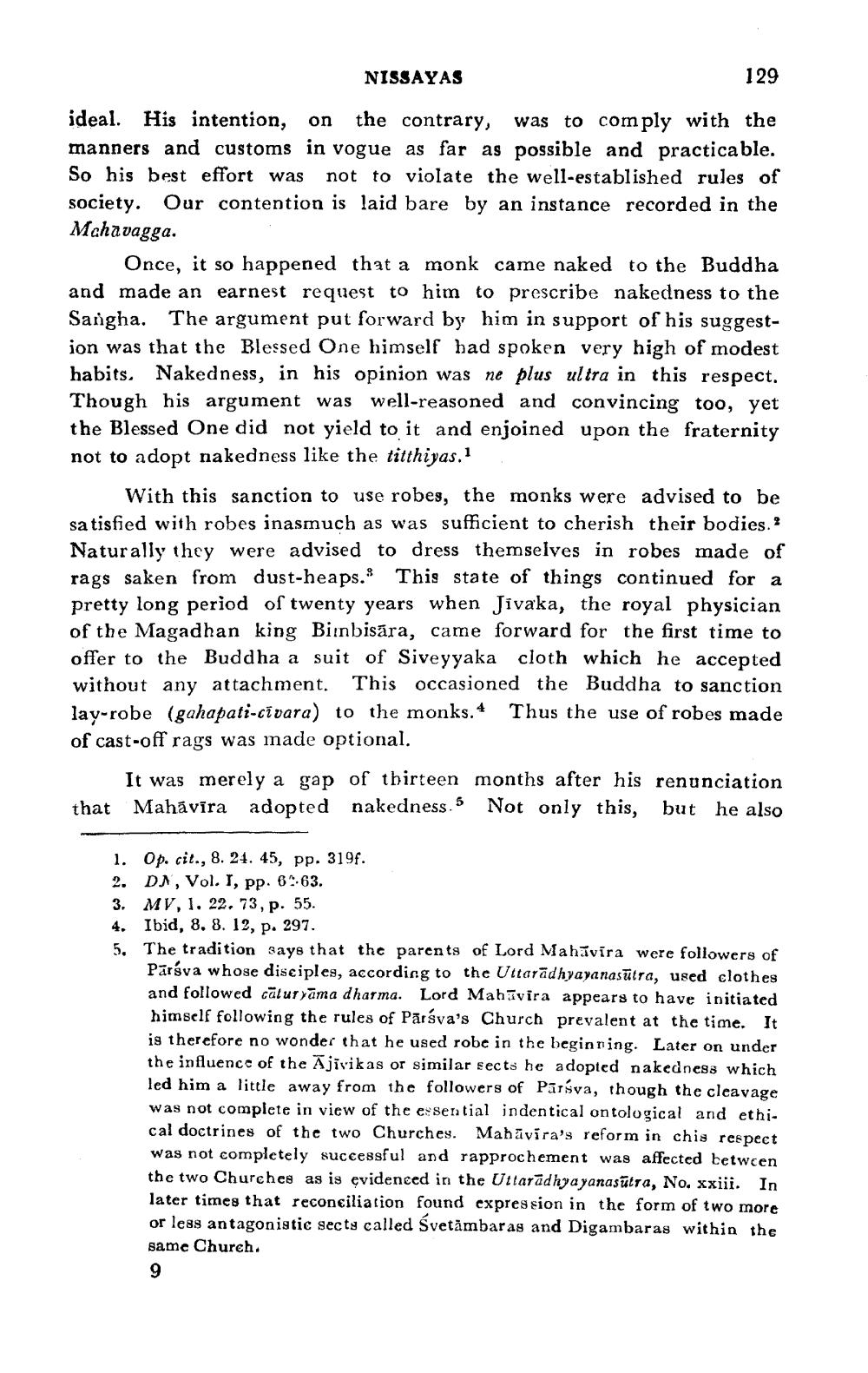________________
NISSAYAS
129
ideal. His intention, on the contrary, was to comply with the manners and customs in vogue as far as possible and practicable. So his best effort was not to violate the well-established rules of society. Our contention is laid bare by an instance recorded in the Mchavagga.
Once, it so happened that a monk came naked to the Buddha and made an earnest request to him to prescribe nakedness to the Sangha. The argument put forward by him in support of his suggestion was that the Blessed One himself had spoken very high of modest habits. Nakedness, in his opinion was ne plus ultra in this respect. Though his argument was well-reasoned and convincing too, yet the Blessed One did not yield to it and enjoined upon the fraternity not to adopt nakedness like the titthiyas.
With this sanction to use robes, the monks were advised to be satisfied with robes inasmuch as was sufficient to cherish their bodies. Naturally they were advised to dress themselves in robes made of rags saken from dust-heaps. This state of things continued for a pretty long period of twenty years when Jivaka, the royal physician of the Magadhan king Birnbisāra, came forward for the first time to offer to the Buddha a suit of Siveyyaka cloth which he accepted without any attachment. This occasioned the Buddha to sanction lay-robe (gahapati-civara) to the monks. 4 Thus the use of robes made of cast-off rags was made optional.
It was merely a gap of thirteen months after his renunciation that Mahāvīra adopted nakedness. 5 Not only this, but he also
1. Op. cit., 8. 24. 45, pp. 319f. 2. DN, Vol. I, pp. 62-63. 3. MV, 1. 22. 73, p. 55. 4. Ibid, 8. 8. 12, p. 297.
The tradition says that the parents of Lord Mahāvīra were followers of Parsva whose disciples, according to the Uttarādhyayanasūtra, used clothes and followed cãturyāma dharma. Lord Mahīvira appears to have initiated himself following the rules of Pārsva's Church prevalent at the time. It is therefore no wonder that he used robe in the beginning. Later on under the influence of the Ajivikas or similar sects he adopted nakedness which led him a little away from the followers of Pārsva, though the cleavage was not complete in view of the essential indentical ontological and ethi. cal doctrines of the two Churches. Mahāvira's reform in chis respect was not completely successful and rapprochement was affected between the two Churches as is evidenced in the Uttarādhya yanasūtra, No. xxiii. In later times that reconciliation found expression in the form of two more or less antagonistic secty called Svetämbarag and Digambaras within the same Church.




